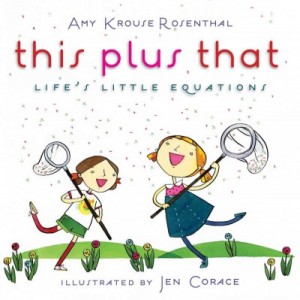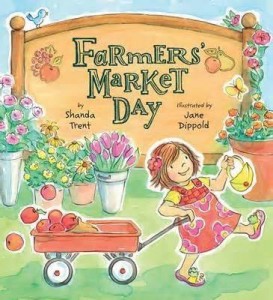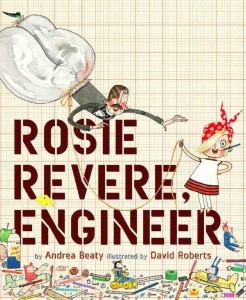Go Out and Play!
 Go Out and Play! Favorite Outdoor Games from KaBOOM! is like a chocolate-covered peanut butter cup: it combines two good things to make something wonderful, and it is something I cannot resist.
Go Out and Play! Favorite Outdoor Games from KaBOOM! is like a chocolate-covered peanut butter cup: it combines two good things to make something wonderful, and it is something I cannot resist.
The peanut-butter-part: Go Out and Play! is a nonfiction book, so sharing it with your students hits that Range of Reading Common Core Standard. Use the the table of contents (nice informational text feature) to help you choose from the dozens of games listed. Use the key at the bottom of each page (another nice informational text feature) to see how many players you’ll need, the recommended age group, how large an area you’ll need, and what, if any, materials you’ll need. Each game has one short page of information explaining how it is played. To build informational reading comprehension, give each student or group of students a page from the book to read. Each group can teach the class how to play that game. (Key Ideas and Details? Check!)
The chocolate part: Go Out and Play! will make your students want to go out and play. So yes it’s an informational book for teaching reading skills, but it’s all about games and playing outside – woohoo! Physical Education teachers will want to keep a copy all to themselves, but get one for your classroom, too, so when your students (or you) need a brain break you can grab this book and play.
When I saw that the author of this book is “KaBOOM!”, I did a little research. “KaBOOM! is a national non-profit dedicated to saving play for America’s children. Our mission is to create great playspaces through the participation and leadership of communities. Ultimately, we envision a place to play within walking distance of every child in America.” Now I like the book even more.
So, choose a game from Go Out and Play! Read how to play the game to or with your students. Then (at the risk of sounding like my mother) go out and play!
For more information about KaBOOM! and its mission to encourage outdoor play, please visit: kaboom.org.
Read MoreThis Plus That: Life’s Little Equations
 Not only is this week’s picture book a fun way to teach some of the Common Core State Standards in Reading, it is also the best inspiration for your “welcome back to school” classroom bulletin board.
Not only is this week’s picture book a fun way to teach some of the Common Core State Standards in Reading, it is also the best inspiration for your “welcome back to school” classroom bulletin board.
This Plus That: Life’s Little Equations written by Amy Krouse Rosenthal and illustrated by Jen Corace is sheer brilliance. It starts with:
1 + 1 = us
I love it! Not only will your students know how to read math symbols after sharing this book, but they’ll look at math much more creatively.
Smile + wave = hello
Smile + ocean wave = beach
Some are compare and contrast (I love what does and does not equal a sincere apology!), some are stand-alone sentences. Most are addition, but other math ideas come into play as well:
cozy + smell of pancakes – alarm clock = weekend
This would be fun to pair with 1 + 1 = 5 by David La Rochelle and Brenda Sexton if you’d like to hit Integrating Knowledge & Ideas, but all on its own This Plus That teaches Print Concepts and works beautifully to build Fluency.
After you share This Plus That, brainstorm and write equations with your students. In the book:
leaves + hot soup = fall
What things add up to fall for your students? And I’d love to make a welcoming bulletin board with:
1 + 1 = us and Joe + Gabriel + Julia + Matt…. = our class
This Plus That + your students = a whole new way of writing with math symbols!
For more information about the author, please visit whoisamy.com.
For more information about the illustrator, please visit jencorace.com.
Read More
Rosie Revere, Engineer
I have the best of reasons for posting late this week: I’ve been on Mackinac Island at the Michigan Reading Association conference, being inspired by dedicated educators and loving the slower pace of an island with no automobiles. Now I’m sitting in a white wicker rocking chair with a cup of coffee and my laptop, dear husband at my side, watching sailboats glide by. The only thing that could make this any better would be a great book, and luckily, I have one.
Rosie Revere, Engineer written by the marvelously talented Andrea Beaty and illustrated by David Roberts is one of the rare rhyming book gems: the story is as solid as the meter and the language isn’t dumbed down in order to make a rhyme. Rosie Revere is the kind of girl most creative people will relate to: joyfully inventive, but so fearful of failure and ridicule that she hides her inventions away. The “gadgets and gizmos” she creates are fantastic, and I love Roberts’ whimsical and yet credible drawings of them. (I myself would love a pair of Rosie’s helium pants.) Rosie’s desire to help her great-great-aunt Rose fulfill her lifelong dream of flying gives Rosie the courage to test one of her inventions.
“The heli-o-cheese-copter sputtered and twitched.
It floated a moment and whirled round and round,
then froze for a heartbeat and crashed to the ground.”
Rosie is devastated by the failure, and by her great-great-aunt’s laughter, until she hears,
“‘Your brilliant first flop was a raging success!
Come on, let’s get busy and on to the next!’“
So not only is the message of this book one that every creative person with perfectionist tendencies needs to hear (I’m keeping it by my bedside table as a reminder) but it has historical notes in it about Amelia Earhart and E. Lillian Todd (the first woman to design airplanes) and Rosie the Riveter and other strong women whose names and deeds should be known. For a social studies lesson, you could easily springboard from this book into studying awesome women inventors. For math-science-art, get graph paper and a bunch of doodads and thing-a-ma-bobs for students to plan, design, build, test, and refine their own inventions. If you ask people to donate old, broken electronic gadgets to your class and bring in small tools, your students can take apart old radios and remote controls to disassemble and use. Build those Phonological Awareness skills by focusing on the rhyme, then discuss the interesting word choices for a Craft & Structure lesson. To keep rocking those Core Standards in Reading, you can easily work in Integrating Knowledge & Ideas by comparing Rosie Revere, Engineer to Iggy Peck, Architect by the same power duo.
So share this book with absolutely everyone you know, and get busy taking creative risks, because
“Life might have its failures, but this was not it.
The only true failure can come if you quit.”
For more information on the author, please visit andreabeaty.com.
For more information on the illustrator, please visit davidrobertsillustration.com.
Farmers’ Market Day
 I am counting the days until my local farmers’ market opens. Until then, I’m glad I found this perfect pick: Farmers’ Market Day written by debut picture-book author Shanda Trent and illustrated by Jane Dippold. This rhyming book is a quick read that can easily be turned into an interactive “imagination” station or a fun math center for students to practice counting money.
I am counting the days until my local farmers’ market opens. Until then, I’m glad I found this perfect pick: Farmers’ Market Day written by debut picture-book author Shanda Trent and illustrated by Jane Dippold. This rhyming book is a quick read that can easily be turned into an interactive “imagination” station or a fun math center for students to practice counting money.
A little girl and her family go to the farmers’ market on Saturday. The little girl has her own money from her piggy bank and she’s not sure what to buy – maybe a basket of cherries, a jar of honey, freshly-baked bread or flowers for the garden? Each enticing item is labeled with a price tag, like $2.00, or 12/$3.00, or 50 cents. Reading aloud this short rhyming book will have your little listeners eager to choose what they’d buy for themselves, and that’s where you can extend the book in ways to draw your students back to rereading.
Younger students can make their own farmers’ market in a pretend-play area. Plastic fruits, vegetables, and flowers can be bought and sold. Students can use Farmers’ Market Day to decide what should be for sale and how much to write on each price tag. (Using the information found in both the text and the pictures is a way of Integrating Knowledge and Ideas. Woohoo!) Older students can use the book to practice money skills. Ears of corn cost $3.00 per dozen – how many ears of corn do you need to feed your class, and how much will it cost? If you have $10.00, what items would you buy? Show your shopping list! With summer and real live farmers’ markets just around the corner, Farmers’ Market Day is a real treat.
Read More







